Hello,
Two years ago, I started this project at a friend's request; I thought also that it would be a nice project for my YT channel, but tragically, all the footage were lost due to computer failure, (these are the consequences of not keeping back up), but anyway. So, what I'm about to show you are pictures from the finished parts and their assembly.
Now, my friend asked me to make one of these classic woodworking marking gauges out of brass; so I did a bit of research in order to get an idea of their dimensions and features. Once this was done, I decided that it would be best to use steel instead of brass. I started with a simple drawing and as I went along other ideas were coming as well. But let's look at these one at a time.
The body of the gauge is made from free cutting steel and it is case hardened (Nitriding). Now, the idea of making this tool from steel and to be hardened was not only to serve for marking wood, but for steel as well.
The length of the body measures 50mm, the diameter at the thinnest section is 20mm and at the face is 50 mm. At the periphery of the face there is a flat (it is actually the bottom of the face) which stops the body from rolling.


For the shaft of the gauge I used a stainless steel 8mm in diameter x 70cm long shaft used in pneumatic spearguns; the actual diameter shown by the micrometer was 7.99mm, which was perfect for what I needed it for.
The shaft threaded M4 on both ends, one end accepts the wheel cutter and on the other there is a cross hole 3mm in diameter which accepts a 3mm carbide rod. The total length of the shaft is 235mm.


Now the body of the gauge is a 4 part assembly; the main body, a threaded sleeve that supports the shaft, an outside taper ring and a threaded cup which both act as the handle.
The sleeve is threaded 14x1mm and its bore reamed to 8mm; itís made from phosphor bronze.


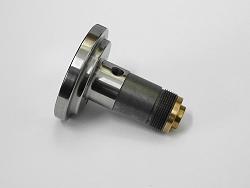
The outside taper ring is made from Damascus steel and the threaded cup from Calmax steel which has a small hole for a key to tighten it and itís oxidized to add contrast.
One of the bodyís features is that right beneath the knurled brass thumb screw there is a plastic set screw; by adjusting this screw I can control the friction applied on the shaft (the set screw feature was copied from the well-known Tite-Mark marking gauge).

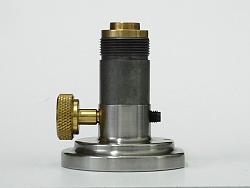
Another feature of the gauge is that it can be converted to a compass for marking circles and arcs. This can be done by inserting a carbide pointing tip to the hole that is located on the flat surface at the down end of the round face.
I also made two brass nuts which both have an M4 set screw secured with Loctite. The short one is for keeping the shaft from slipping out from the body and the longest acts both for locking the carbide marking tip and as a handle when the gauge will be used for marking long lines or circles and arcs.
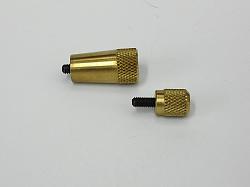

Although finger tightness on these two offers good grip, I can always use an Allen key for more secure grip.
Additionally, I made a brass pad (55mm in diameter); this is very handy on marking big circles and arcs. On its center there is a press fit piece of Acetal and since Acetal is a low friction material it will enhance the rotation of the gauge. Also, the base of the pad is lined with rubber for better adhesion on slippery surfaces.

Now, I have adjusted the length of the carbide pointing tip so when I will insert it all the way down into the hole and then use it with the brass pad to mark a circle its tip will not leave a mark on the center of the surface.


As for the carbide rods, I have ground two for marking, one at 30 degrees, the other at 45 and the pointing tip at 60 degrees.
I made a wrench for tightening the cup as well an extra sleeve.

The marking range of the gauge is:
Using the wheel cutter, from 1.0 up to 180mm
With the carbide, from 1.0 up to 170mm
Using the gauge as a compass, I can mark effectively from 25 up to 340mm. If the gauge used in conjunction with the brass pad, then itís from 55 up 340mm.



Finally I made a case from solid Niangon wood, Wenge and plywood. The lid of the case outside is dressed with black leather.

Now, I was so excited with the project and as I'm a bit crazy I made a couple more of these gauges, here are some pictures.
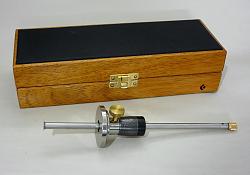



This is a simple one
Here is a short video to see how it works.
All the best
Dimitris


 LinkBack URL
LinkBack URL About LinkBacks
About LinkBacks



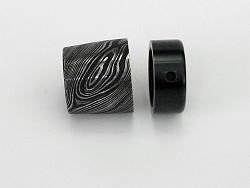















 Reply With Quote
Reply With Quote


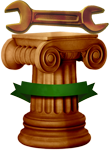





Bookmarks